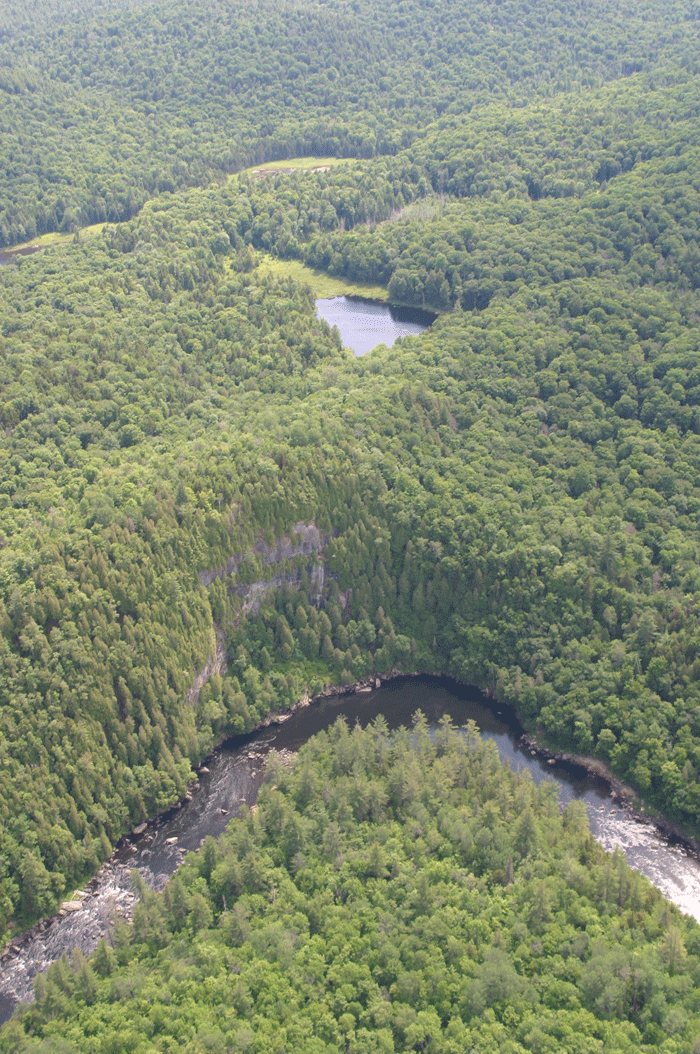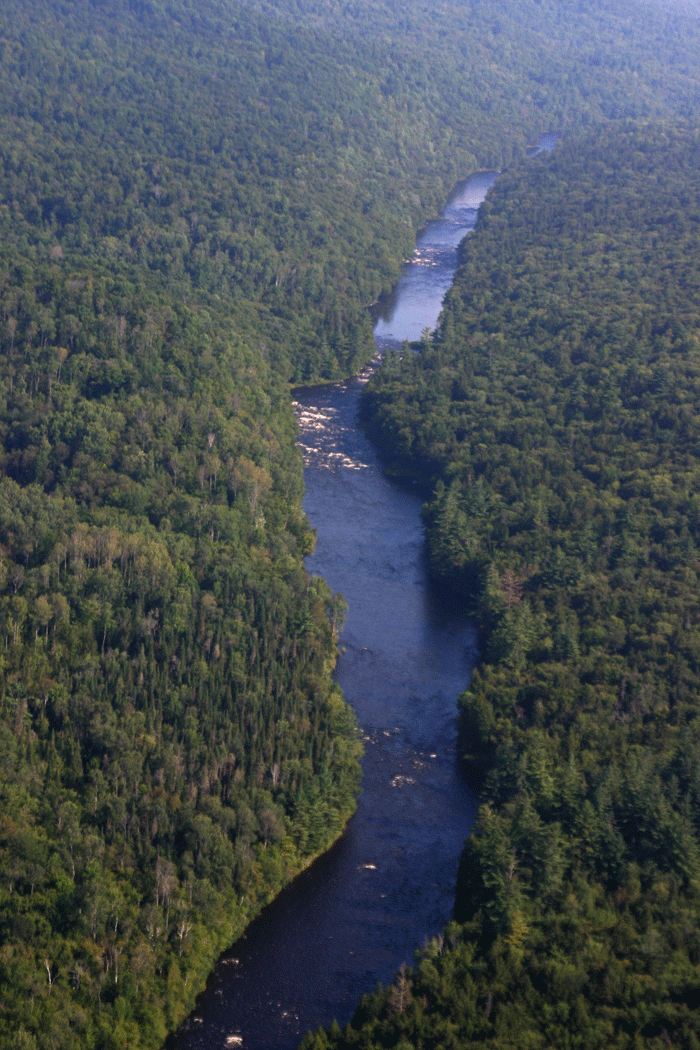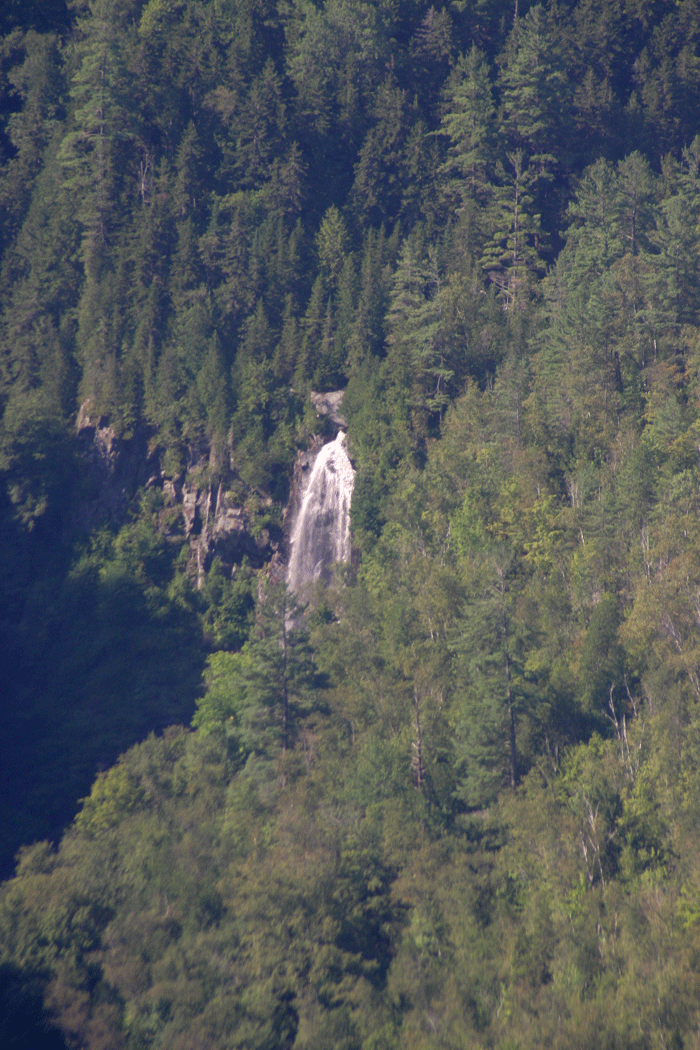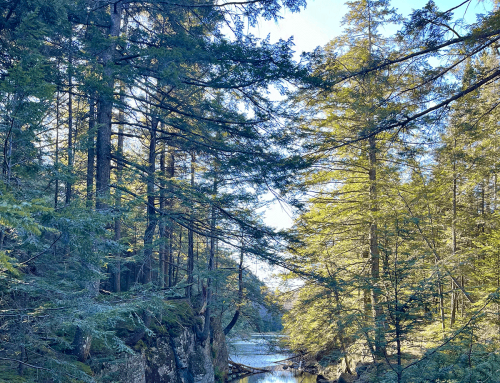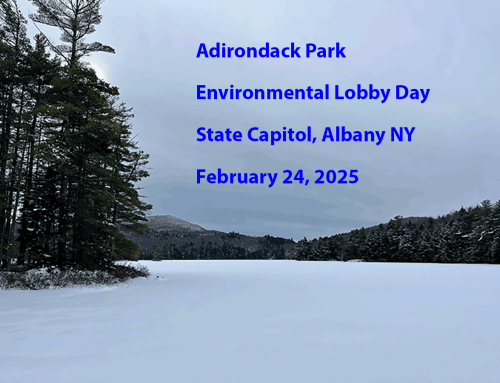From the Governor’s press office with pictures by Protect the Adirondacks:
Governor Cuomo Announces State Closes on Second Phase of Former Finch Land Acquisition in The Adirondacks
The Nature Conservancy to Provide $500,000 to State for Adirondack Communities to Promote Economic Development and Tourism
Albany, NY (April 23, 2013)
Governor Andrew M. Cuomo today announced that New York State closed on 9,300 acres of the former Finch Pruyn lands in the Adirondacks. The acquisition of these properties, announced in August 2012 by the Governor, will ensure their continued protection and an expansion of tourism opportunities in the Park, benefitting local communities.
The land parcels purchased today from the Nature Conservancy include: the OK Slip Falls tract in Hamilton County; the Casey Brook tract in Essex County; the Spruce Point tract in Washington County; the Saddles tract in Washington County; the Hudson Riverside/Ice Meadow Tract in Warren County; and the Indian River tract in Essex and Hamilton counties.
“There is not a more fitting way to celebrate Earth Week than protecting spectacular property in the Adirondack Park that will create tourism opportunities and bring more visitors to this magnificent place,” Governor Cuomo said. “With these newest acquisitions, we are building upon past state investments in the Adirondacks as we enhance a world-class Park that contains a wealth of private and public lands in one of the most beautiful settings on earth.”
“The Adirondacks are a unique part of New York and lead the world in linking the conservation of natural resources with sustainable community and economic development. Adding these former Finch lands to the Forest Preserve will open a magnificent stretch of the Upper Hudson to the public and attract new visitors to the interior of the Adirondacks,” Department of Environmental Conservation Commissioner Joe Martens said.
As part of this historic conservation effort, TNC also granted $500,000 to the State to support community connections and economic development linked to the former Finch lands in Newcomb, Minerva, North Hudson, Indian Lake, Long Lake and other towns.
Bill Ulfelder, Executive Director of The Nature Conservancy in New York, said, “Thanks to the leadership of Governor Andrew Cuomo and Commissioner Joe Martens, New York State is strengthening its remarkable conservation legacy with these additions to the Adirondack Park. Keeping the forests, rivers, streams and lakes of the region protected is not only good for tourism, recreation and wildlife, but also helps keep New York’s water clean and reduces the risk of floods during extreme weather events like Hurricanes Irene and Sandy.”
Michael Carr, Executive Director of The Nature Conservancy’s Adirondack Chapter, said, “The scale of this project is enabling us to collectively achieve significant ecological protections, while allowing for a variety of compatible uses, as well as creating some really exciting, world-class recreational opportunities. Getting to this point is the result of a lot of hard work by state officials, local community leaders, forestry professionals, and others willing to roll up their sleeves and find innovative solutions.”
In 2007, TNC purchased the entire 161,000-acre property from Finch Pruyn. TNC sold 90,000 acres to a private company for timber management. The State acquired conservation easements on these lands in 2010 to ensure the lands would be protected and maintained for sustainable, working forests in communities across the North Country.
TNC managed a 69,000-acre landholding with the intent to ensure its protection. Under an agreement announced last summer by Governor Cuomo, the 69,000-acre property will be sold to the state pursuant to a phased five-year contract which began in 2012. Once complete, the acquisition of the former Finch lands will be the largest addition to the State Forest Preserve in 118 years.
This acquisition complements the State’s purchase of the 18,318-acre Essex Chain of Lakes property in late 2012. The State will pay The Nature Conservancy $6.3 million for a total of approximately 9,300 acres and will pay full property taxes on the land.
DEC and APA are working together to plan for the future classification of the former Finch lands. DEC has completed a Proposal for Public Access and State Land Classification for the entire 69,000-acre property, based upon input from Adirondack local governments and other stakeholders, and submitted it to the Adirondack Park Agency and to Park stakeholder groups.
The APA will release a draft land classification plan for the parcel later this year. A public comment period will begin once the draft plan is released and public hearings will be held before the final recommendations are sent to the Governor for approval. Once land classifications are approved, DEC will develop Unit Management Plans that will guide long-term public and administrative use of the properties. An open and transparent process, including a public comment period, will be held for each Unit Management Plan.
Currently, the APA and DEC are working on an interim public access plan to provide early access to the Hudson and Cedar Rivers through the Essex Chain of Lakes and Indian River Tracts. This interim public access plan is expected to be released in the next few weeks with public motor vehicle access to begin in late May or early June depending on road conditions.
Town of Newcomb Supervisor George Cannon said, “The acquisition of these tracts will increase hiking opportunities and provide direct access to the Upper Hudson River from the Newcomb Town Beach. Attracting more visitors to the interior should increase economic opportunities for Adirondack communities.”
Town of Indian Lake Supervisor Brian E. Wells said, “The state’s acquisition of the OK Slip Falls and Indian River parcels represents a new mind set coming out of Albany. The Governor has proposed these land acquisitions as not only an environmental necessity but also an economic necessity for the state. DEC is charged with reaching a balanced approached in their recommendations of classification to the APA. DEC has reached out to the local communities to ask input to be put forward to the APA. If these classifications are done with local input from the communities who are going to be affected the most, it could lead to a resurrection in the park.”
The tracts to be acquired during the next several weeks include:
Indian River/Hudson River, Towns of Indian Lake and Minerva, Hamilton and Essex Counties: The most exciting and popular whitewater rafting experience in the Adirondacks starts on the Indian River and continues for nearly 15 miles down the Hudson River Gorge. Adding this 940-acre tract to the publicly owned forest preserve will keep the experience wild. (See also OK Slip Falls tract.) The parcel is critical to preserving the rafting experience that draws 25,000 people annually. It is also key to unlocking new recreational opportunities by providing long-awaited access and take-out points that will make the enticing stretch of the upper Hudson River to the north a viable option for paddlers wishing to experience calmer waters than the class III/ IV rapids of the Gorge.
This will be an incredible draw for visitors seeking this unique and limited wild rivers experience, bringing people to the communities of Indian Lake, Blue Mountain Lake, Long Lake, Newcomb and Minerva to seek accommodations and supplies. This aspect of the project will be open to public use this year as discussed above. Up-to-date details on public access will be provided on DEC’s website at: www.dec.ny.gov.
OK Slip Falls, Town of Indian Lake, Hamilton County: One of the most spectacular waterfalls in the Adirondack Park, OK Slip is part of a 2,800-acre property that will soon be made available to the public for hiking and other outdoor pursuits. The tract contains 2.1 miles of the Hudson River, the Blue Ledges, the Hudson River Gorge, as well as Carter, Blue Ledge and Pug Hole ponds. This property also contains one of the most exciting sections of a popular whitewater route that draws more than 25,000 adventurers who annually pass through this property.
This tract is believed to harbor more rare and significant plants, mosses and liverworts than any other site in the Adirondack Park. It is also the only place in New York State where purple mountain saxifrage, hair-like sedge, wild chives and other rarities are known to exist.
Adirondack soils are typically acidic due to the geological makeup of the predominate bedrock. In this area, the bedrock is streaked with mineral-rich Grenville marble. One-billion-year-old marble outcrops in places like the Blue Ledges and OK Slip Falls have created growing conditions favorable for unique assemblages of plants to thrive. Blue Ledges is all marble, and because it faces northwest and remains wet through the summer it has functioned as a refuge—a small, detached piece of arctic mountain—and allowed a relic community of northern plants to persist. More than one-third of the 96 mosses that grow at Blue Ledge are uncommon or rare. Likewise, about one-third of the 69 mosses and liverworts at OK Slip Falls are also uncommon or rare. At OK Slip ravine, Braun’s holly fern and Pennsylvania buttercup are among the uncommon or rare vascular plants found.
Casey Brook, Town of North Hudson, Essex County: The 1,587-acre Casey Brook tract is strategically situated south of the High Peaks area of the Adirondack Park to the west of the Elk Lake Preserve. It provides a direct hiking connection to Mount Marcy and other High Peaks, as well as public hunting and camping opportunities. It adjoins the Boreas Ponds Tract, part of the former Finch lands that will be acquired later by the State.
The Saddles, Town of Whitehall, Washington County: This 2,540 –acre property also is outside the Adirondack Blue Line, in Washington County. This property was not part of Finch Paper’s holdings, but was acquired by The Nature Conservancy with the intent that it be sold to the state. The tract features dramatic cliffs and more than 2,250 feet of undeveloped shoreline on Lake Champlain’s South Bay. There is a complex of streams, marshes, swamps, and floodplain forests that dominate the lowlands of the South Bay. Talus slopes, cliffs and northern hardwood forests characterize the surrounding uplands. The large, intact forest, exposed rocky ridges and slopes of the Saddles Mountain provide foraging grounds for Eastern timber rattlesnake (threatened) and habitat for peregrine falcon (endangered). There is a unique wild rice marsh at the base of the Saddles.
Spruce Point (AKA Dolph Pond), Town of Whitehall, Washington County: As this 726-acre piece is outside the Adirondack Park, it will become a new state forest to be used for sustainable timber harvesting, hiking, hunting, camping and other outdoor recreational opportunities, free of charge to the public. The parcel adjoins state conservation easement land to the west and is within an important wildlife pathway area between the Champlain and Lake George basins and Vermont’s Green Mountains. The property features interesting ridges, a variety of forest types, including Appalachian oak hickory and hemlock northern hardwood, and provides habitat for black bear, white tail deer and other wildlife.
Hudson Riverside/Ice Meadow Tract, Town of Chester, Warren County: This 727-acre parcel is an ecologically significant piece along 1.5 miles of the Hudson River, which links to a previously acquired Forest Preserve parcel. DEC will work with the Town of Chester to develop a trail system that avoids impacts to fragile plant life and private properties.

